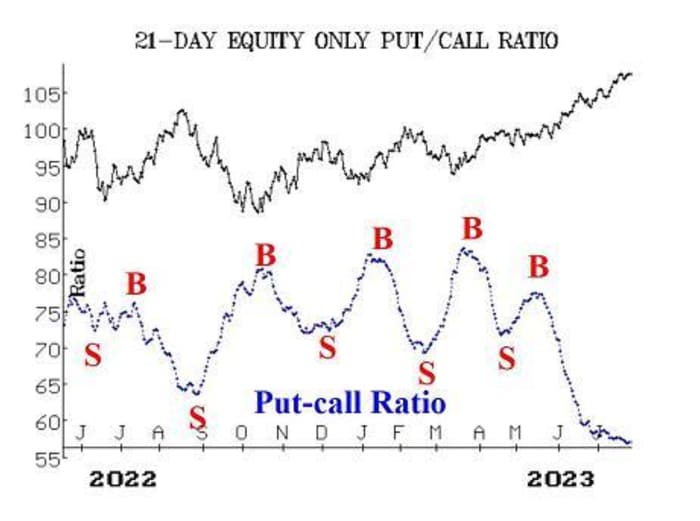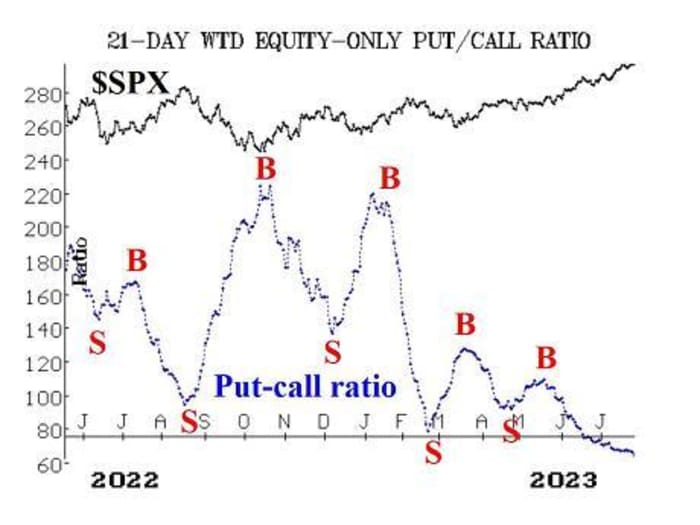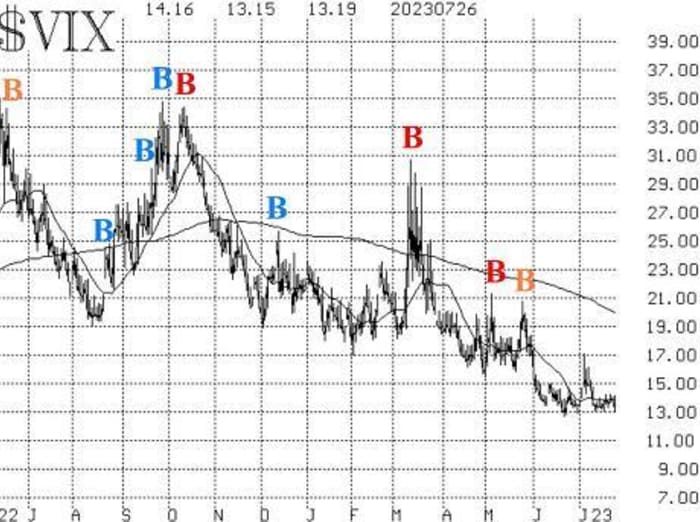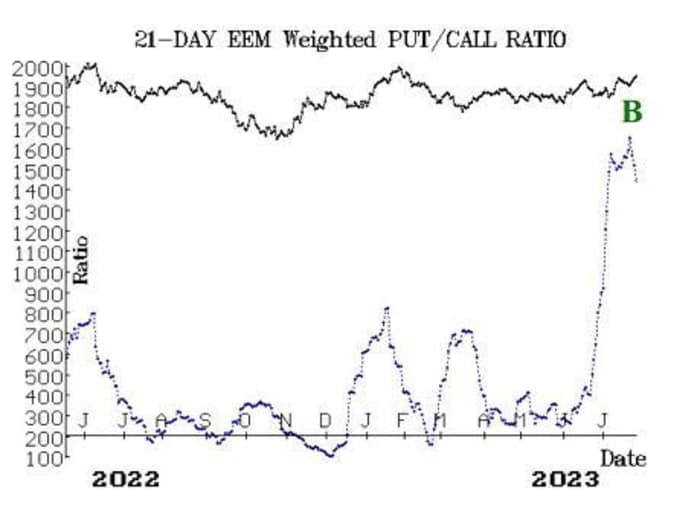Over two thousand attendees are descending on the Fontainebleau Hotel in Miami Beach for the annual Exchange ETF conference. To entice participants, the organizers rented out the entire LIV Nightclub Miami at the hotel for a Super Bowl party Sunday night.
While much of the conference is an excuse to party among the ETF industry reps and the Registered Investment Advisors (RIAs) that are the main attendees, the industry needs a lot of advice.
The Good news: still lots of money coming in, but the industry is maturing
The ETF juggernaut continues to rake in money, now with north of $8 trillion in assets under management. Indexing/passive investing, the main impetus behind ETFs 30 years ago, continues to bring in new adherents as smarter investors, including the younger ones that have begun investing since the pandemic, come to understand the difficulty of outperforming the market.
The bad news is much of the easy money has already been made as the industry is now reaching middle aged. Just about every type of index fund that can be thought of is already in existence.
To grow, the ETF industry has to expand the offerings of active management and devise new ways to entice investors.
Actively managed strategies did well in 2023, accounting for about a quarter of all inflows. Covered call strategies like the JPMorgan Equity Premium Income ETF (JEPI), which offered protection during a downturn, raked in money. But with the broad markets hitting new highs, it’s not clear if investors will continue to pour money into covered call strategies that, by definition, underperform in rising markets.
Fortunately, the industry has proven very skilled at capturing whatever investing zeitgeist is in the air. That can range from the silly (pot ETFs when there was no real pot industry) to ideas that have had some real staying power.
Six or seven years ago, it was thematic tech ETFs like cybersecurity or electric vehicles that pulled in investors.
The big topics in 2024: Bitcoin, AI, Magnificent 7 alternatives
In 2024, the industry is betting that the new crop of bitcoin ETFs will pull in billions. Bitcoin for grandma? We’ll see.
Besides bitcoin, the big topics here in Miami Beach are 1) A.I/ and what it’s going to do for financial advisors and investors, and 2) how to get clients to think about equity allocation beyond the Magnificent 7.
Notably absent is China investing.
Bitcoin for grandma? Financial advisors are divided on whether to jump in
Ten spot bitcoin ETFs have successfully launched. The heads of three of those, Matt Hougan, chief investment officer at Bitwise, Steve Kurz, global head of asset management at Galaxy and David LaValle, global head of ETFs at Grayscale, will lead a panel offering advice to financial advisors, who seem divided on how to proceed.
Ric Edelman, the founder of Edelman Financial Engines, the #1 RIA in the country and currently the head of the Digital Assets Council of Financial Professionals (DACFP), will also be present.
Edelman has long been a bitcoin bull. He recently estimates bitcoin’s price will reach $150,000 within two years (about three times its current price), and has estimated that Independent RIAs, who collectively manage $8 trillion, could invest 2.5% of their assets under management in crypto in the next two to three years, which would translate into over $154 billion.
Inflows into bitcoin ETFs to date have been modest, but bitcoin ETFs are being viewed by some advisors as the first true bridge between traditional finance and the crypto community.
But many advisors are torn about recommending them, not just because of the large number of competing products, but because of the legal minefields that still exist around bitcoin, specifically around SEC Chair Gary Gensler’s warning that any financial advisor recommending bitcoin would have to be mindful of “suitability” requirements for clients.
For many, those suitability requirements, along with the high volatility, continuing charges of manipulation, and the doubt about bitcoin as a true asset class will be enough to keep them away.
The bitcoin ecosystem is in going into overdrive to convince the RIA community otherwise.
Artificial intelligence: What can it do for the investing community?
Thematic tech investing (cybersecurity, robotics, cloud computing, electric vehicles, social media, etc.) has waxed and waned in the last decade, but there is no doubt Artificial Intelligence ETFs (IRBT, ROBT, BOTZ) has recaptured some interest. The problem is defining what an AI investment looks like and which companies are exposed to AI.
But the impact is already being felt by the financial advisory community.
Jason Pereira, senior partner & financial Planner, Woodgate Financial, is speaking on how financial advisors are using artificial intelligence. There are amazing AI tools that financial advisors can now use. Pereira describes how it is now possible to generate financial podcasts with just snippets of your own voice. Just plug in a text, and it can generate a whole podcast without ever saying the actual words. How to generate text? In theory, you could go to Chat GPT and say, for example, “Write 500 words about current issues in 401(k)s,” and rewrite it slightly for a specific audience.
In a world where a million people can now generate a podcast on financial advice, how do you maintain value? Much of the lower skilled tasks (data analysis) will quickly become commodified, but Pereira believes a very big difference will quickly emerge between volume and quality.
Equity Allocation Beyond the Magnificent Seven
Financial advisors are beset by clients urging them to throw money at the Magnificent 7. Roundhill’s new Magnificent 7 ETF (MAGS) has pulled in big money in the last few months, now north of $100 million in assets under management.
Since the end of last year, there have been enormous inflows into technology ETFs (Apple, Microsoft, NVIDIA), and modest inflows into communications (Meta and Alphabet) and consumer discretionary (Amazon). Most everything else has languished, with particular outflows in energy, health care, and materials.
Advisors are eager for advice on how to talk to clients about the concentration risks involved in investing solely in big-cap tech and how to allocate for the long haul.
Alex Zweber, managing director investment strategy at Parametric and Eric Veiel, head of global investments and CIO at T. Rowe Price are leading a panel on alternative approaches that have had some success recently, including ETFs that invest in option overlays, but also on quality and momentum investing in general, which overlaps but is broader than simply investing in the Magnificent 7.
Stop talking about numbers and returns and start offering “human-centric” advice
Talk to any financial advisor for more than a few minutes, and they will likely tell you how difficult it is dealing with some clients who are convinced they should put all their money into NVIDIA, or Bolivian tin mines, or who have investing ADHD and want to throw all their money in one investment one day, then pull it out the next.
Brian Portnoy and Neil Bage, co-founders of Shaping Wealth, are leading one of the early panels on how financial advisors can move away from an emphasis on numbers and more toward engaging with their clients on a more personal and emotional level.
Sounds touchy-feely, but competition for clients has become intense, and there is a new field emerging on how to provide financial advice that is less centered on numbers (assets under management, fees, quarterly statements), and more centered on developing the investor’s understanding of behavioral finance and emotional intelligence.
Under this style of investment advice, often called “human-centric” or “human-first” advice, more time may be spent discussing behavioral biases that lead to investing mistakes than on stock market minutiae. This may help the clients develop behaviors that, for example, are better suited to longer term investing (less trading, less market timing).
Advocates of this approach believe this is a much better way to engage and keep clients for the long term.
What’s missing? China
For years, a panel on international investing, and specifically emerging markets/China investing, was a staple at ETF conferences.
Not anymore. Notably absent is any discussion of international investing, but particularly China, where political risk is now perceived to be so high that investors are fleeing China and China ETFs.
Indeed, investing “ex-China” is a bit of a thing.
The iShares Emerging Markets ex-China ETF (EMXC) launched with little fanfare in 2017 and had almost no assets under management for several years. That changed in late 2022, when China ETFs began a long slow descent, and inflows exploded into EMXC from investors who still wanted emerging market exposure, just not to China.
Source link
#Bitcoin #Magnificent #emerging #ETF #trends #industry #gathers #big #conference






